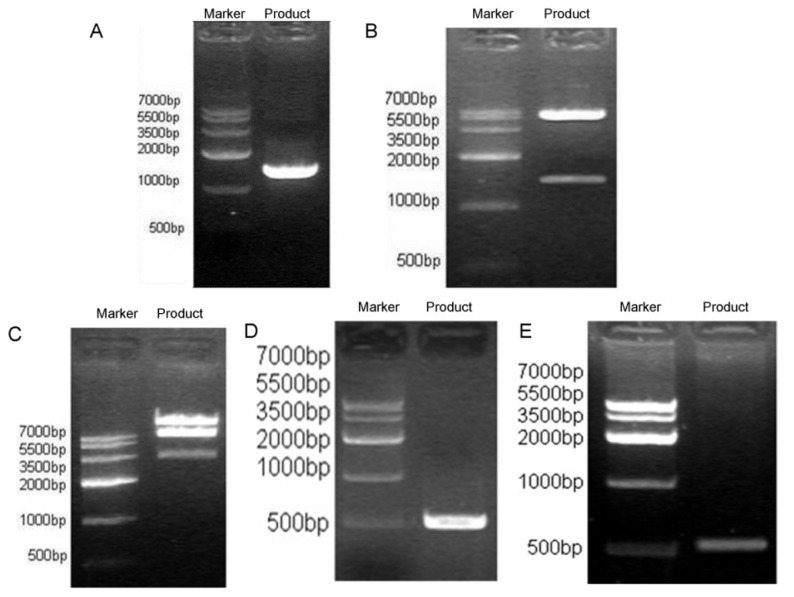Figure 2.
Recombinant adenoviral-mediated gene delivery to HEK293 cells. (A) The NK4 gene fragment was amplified by PCR (about 1.45 kb) by using the plasmid pBluescript II-SK(+)-HGF as template, the amplified products were analyzed and detected using the GIS gel system; (B) The NK4 gene fragment was sub-cloned into pYr-adshuttle-6 carrier. Positive clones identified by NheI and SalI double digestion can produce 1.45 kb fragment band and 5.8 kb carrier band, speculating that NK4 gene fragment has been cloned into pYr-adshuttle-6; (C) The NK4 gene fragment (NK4-IRES-EGFP) in vitro was cloned into adenovirus expression vector pAd/BL-DEST using recombinant LR technology. Positive clones can produce small, ca. 3.5, 7.5 kb fragments as well as greater than 15 kb fragments, indicating that the NK4 gene fragment has been cloned into pAd/BL-DEST vector, named pAd-NK4; (D) The NK4 fragment was amplified by PCR (about 500 bp) by using the plasmid pAd-NK4 as template, the amplified products were analyzed and detected in the GIS gel system, and the consistency of the two fragments confirmed that the pAd-NK4 vector was successfully constructed; (E) PCR analysis for NK4 confirmed proper recombination.

